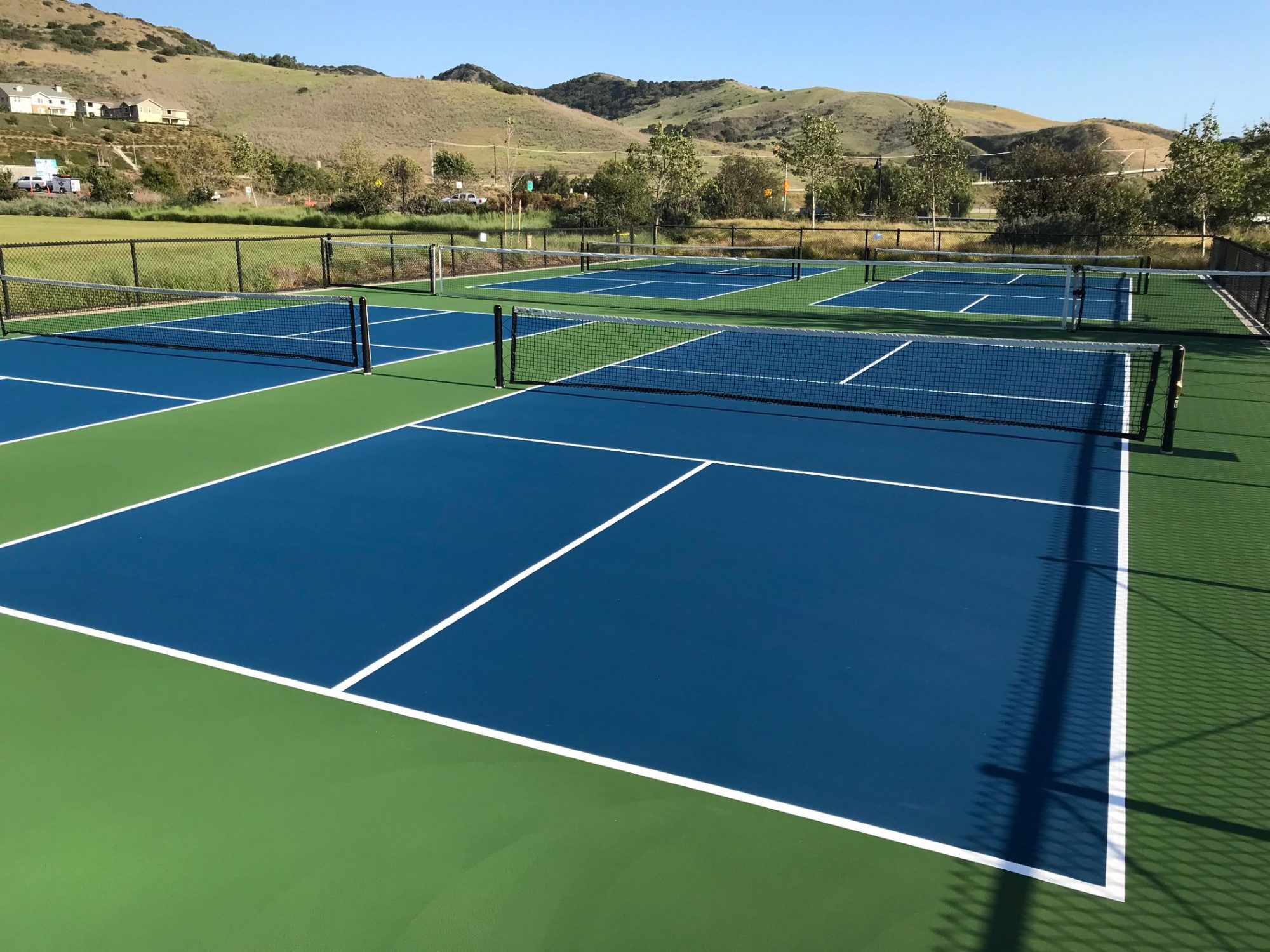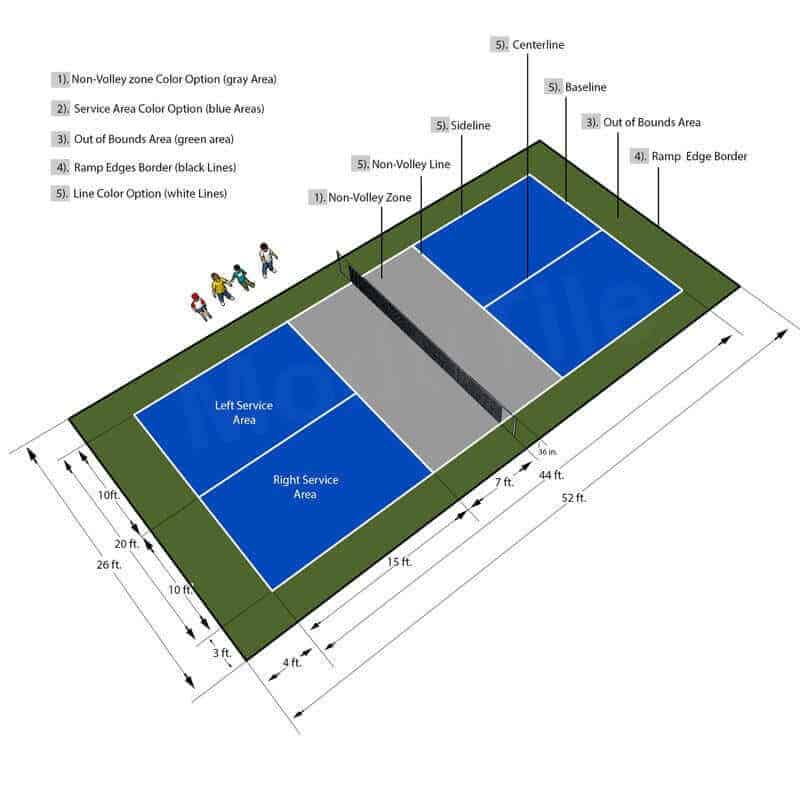The Ultimate Overview to Planning Your Pickleball Court Construction Job
The Ultimate Overview to Planning Your Pickleball Court Construction Job
Blog Article
Navigating Rules for Pickleball Court Building in Your Location
Building a pickleball court in your location calls for a nuanced understanding of different regional guidelines, consisting of zoning legislations, building licenses, and safety and security requirements. Each community imposes particular standards that can considerably affect the expediency of your task. Engaging with local authorities and the community is important for ensuring conformity and promoting support. Nonetheless, navigating this regulatory landscape can be lengthy and complicated. What are the essential steps you should take into consideration to avoid possible risks and make sure a smooth building and construction procedure?
Understanding Regional Zoning Laws
When thinking about the building and construction of a pickleball court, comprehending neighborhood zoning legislations is crucial to guaranteeing compliance and avoiding prospective lawful concerns. Zoning laws determine how land can be utilized and often consist of requirements pertaining to leisure facilities. These legislations can differ substantially by municipality, affecting variables such as court positioning, dimension, illumination, and sound levels.
Before initiating construction, it is vital to seek advice from the local zoning board or planning department to ascertain the details regulations that use to your building. Certain areas may limit leisure tasks, while others may require particular permits or adherence to certain standards. It is likewise vital to think about problems, which figure out exactly how much frameworks need to be from residential or commercial property lines or various other buildings.
In addition, exclusive developments, such as house owner organizations (HOAs), may impose their own regulations concerning the building and construction and use of pickleball courts. Understanding these laws can protect against expensive alterations or lawsuits down the line. Involving with regional stakeholders and community members can provide beneficial insights and foster assistance for your task, making sure that it aligns with the area's demands and assumptions.
Getting Necessary Building Allows
Just how does one browse the complexities of obtaining essential building permits for a pickleball court? Typically, you will certainly need to submit a comprehensive website plan that outlines the proposed court measurements, products, and format.

Once authorizations are obtained, it is essential to comply with any inspection routines and requirements throughout the building and construction phase. Maintaining interaction with regional authorities will certainly assist in a smoother authorization process and aid avoid prospective obstacles. By extensively preparing and understanding the allowing landscape, you can effectively browse the intricacies associated with constructing a pickleball court while staying compliant with all neighborhood guidelines.

Assessing Environmental Impact
When intending the building of a pickleball court,A detailed analysis of ecological influence is essential (Pickleball court construction). This evaluation aids determine prospective results on local environments, water resources, and community visual appeals. Trick factors to consider consist of site option-- making certain that the court is not built on environmentally sensitive land, such as marshes or environments for endangered types
Dirt stability and drain patterns ought to be evaluated to stop erosion and water merging, which can adversely impact bordering plants and wild animals. Furthermore, the choice of materials is vital; choosing for lasting and environment-friendly choices reduces ecological injury.
The implementation of effective stormwater management practices is another crucial facet, as it helps minimize overflow and sedimentation. Involving with regional ecological companies can give beneficial insights into laws and best methods specific to your location.
Lastly, area input can be valuable in comprehending any local environmental concerns and cultivating support for the project. By performing a thorough ecological effect assessment, stakeholders can guarantee that pickleball court construction straightens with lasting techniques and adds positively to the neighborhood's ecological health.
Conforming With Safety And Security Standards
Making certain compliance with safety criteria is essential for the successful building and procedure of a pickleball court. Following recognized security guidelines minimizes the risk of crashes and injuries, making certain a protected atmosphere for gamers.
Key safety requirements consist of proper court dimensions, surface area products, and lighting requirements. The court has to fulfill the official measurements of 20 feet wide by 44 feet long for doubles play, with ideal buffer areas to stop injuries from wayward spheres. Pickleball court construction. The surface needs to be constructed from non-slip materials to enhance traction and lower the probability of drops
Furthermore, lights should be ample for night play, offering consistent illumination to prevent shadows that can impede exposure. Regional building codes might likewise determine specific needs for fence and net height to make sure player security and avoid unauthorized accessibility to the court area.
Normal evaluations and maintenance are important to support these criteria over time. By prioritizing safety conformity, court owners not only shield players but additionally promote a positive credibility within the area. This commitment to safety can encourage higher involvement and satisfaction of the sporting activity, eventually adding to its growth and sustainability.

Involving the Neighborhood in Planning
Area involvement in the planning phases of pickleball court construction can substantially enhance the job's overall success. Engaging regional citizens and stakeholders promotes a review sense of possession and urges joint decision-making, which can lead to wider assistance for the initiative.
To efficiently include the community, coordinators need to launch public conferences or workshops, providing a system for locals to articulate their viewpoints and preferences relating to place, style, and features. Surveys and comments types can additionally be made use of to gather insights from a bigger audience, making certain that diverse point of views are thought about.
Furthermore, developing a community board of advisers can facilitate continuous discussions and address issues throughout the preparation procedure. This board can include agents from various demographics, such as regional institutions, recreational companies, and community organizations, consequently magnifying community representation.
Effective interaction is essential; updates about the job must be consistently shared through newsletters, social media sites, or regional bulletins. By focusing on area involvement, planners can grow interest, reduce possible resistance, and develop a pickleball facility that truly reverberates with local values and demands. This joint strategy not only enriches the project however additionally reinforces neighborhood ties.
Conclusion
In verdict, browsing the complexities of pickleball court building necessitates an extensive understanding of regional guidelines, including zoning regulations, structure licenses, and safety standards. By sticking to these standards and fostering partnership, effective application of pickleball courts can be achieved, promoting entertainment opportunities and neighborhood health.
Building a pickleball court in your location requires a nuanced understanding of various neighborhood laws, including zoning regulations, building licenses, and safety standards.When thinking about the building official statement and construction of a pickleball court, comprehending neighborhood zoning laws is essential to guaranteeing compliance and preventing prospective lawful problems. By completely preparing and comprehending the allowing landscape, you can efficiently navigate the intricacies entailed in creating a pickleball court while remaining compliant with all regional regulations.
In conclusion, browsing the complexities of pickleball court building necessitates a thorough understanding of regional policies, including zoning regulations, structure licenses, and safety and security criteria. By sticking to these guidelines and promoting collaboration, successful execution of pickleball courts can be attained, advertising leisure opportunities his comment is here and area well-being.
Report this page